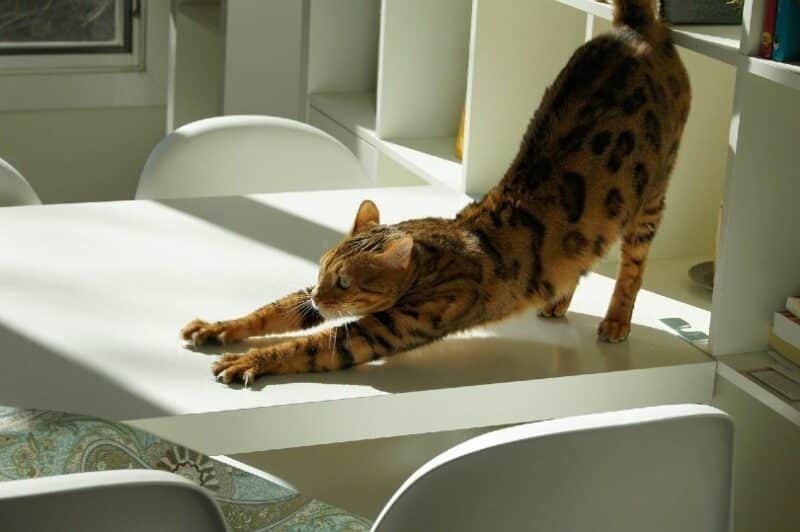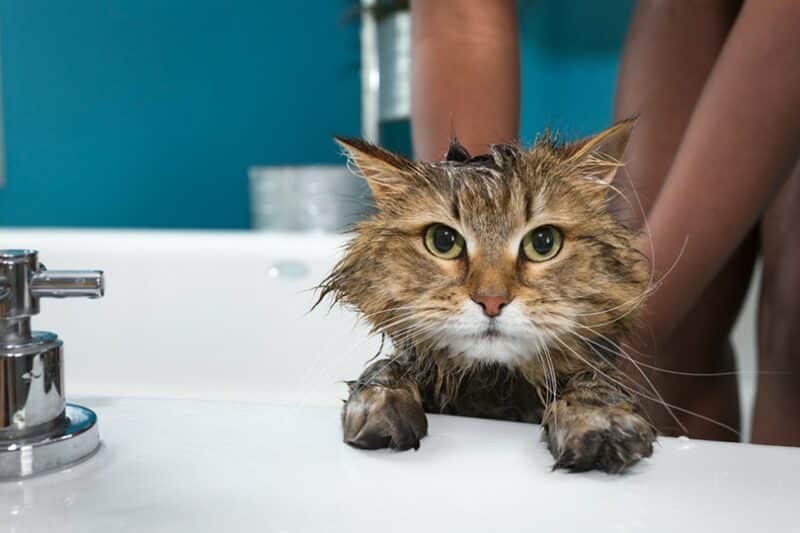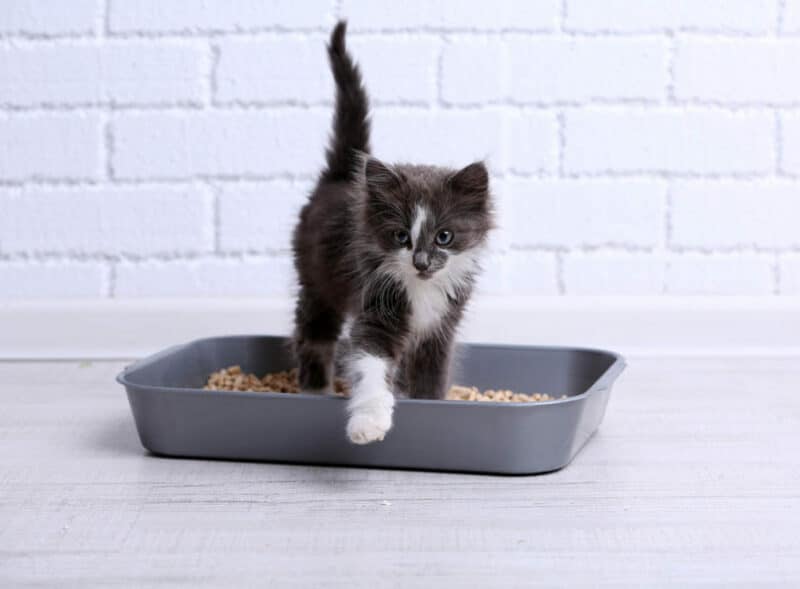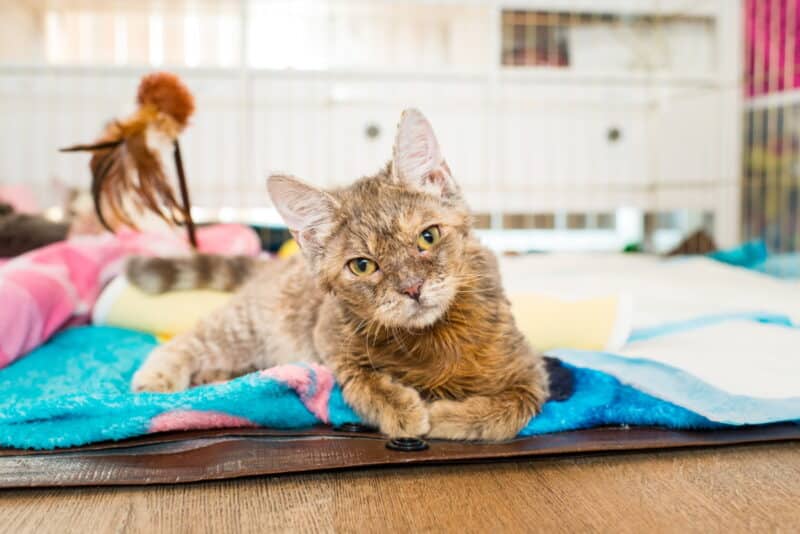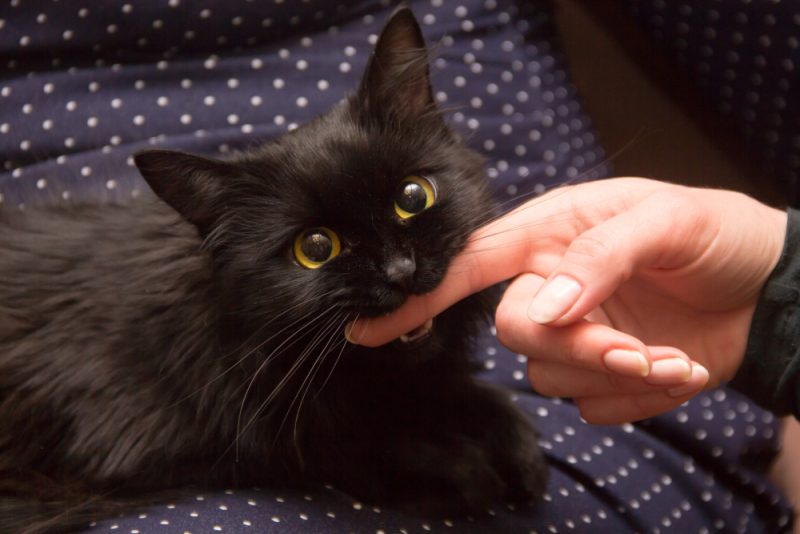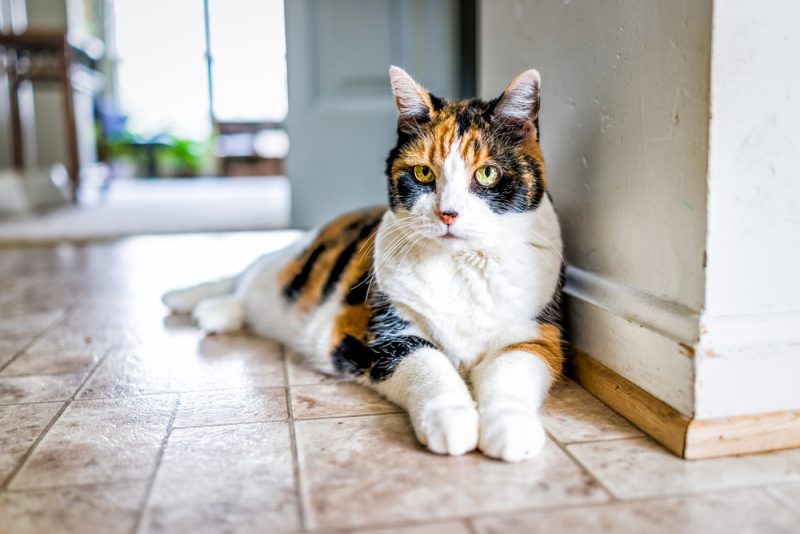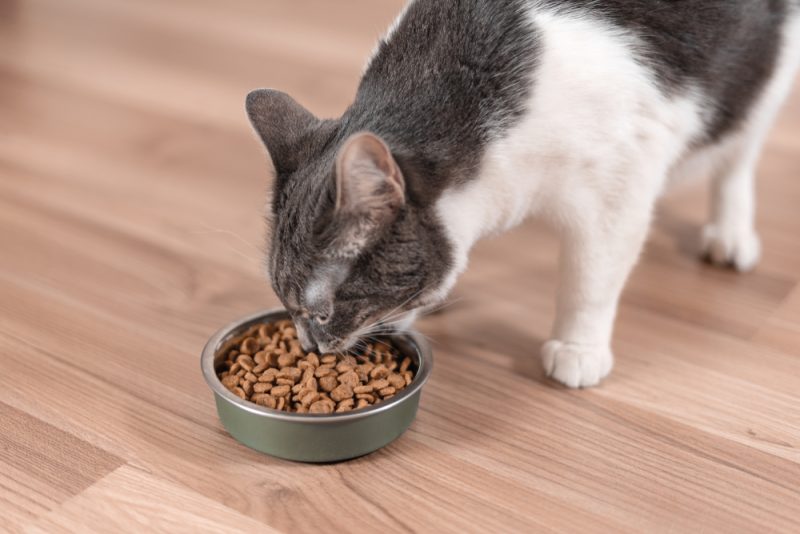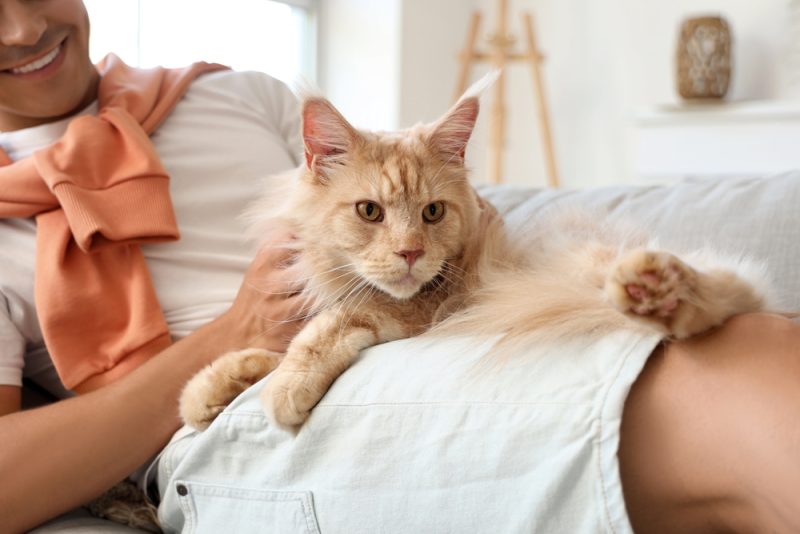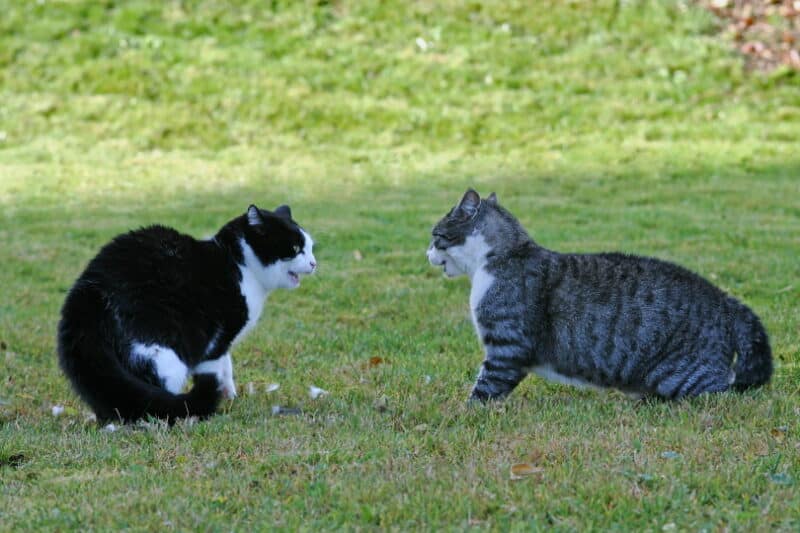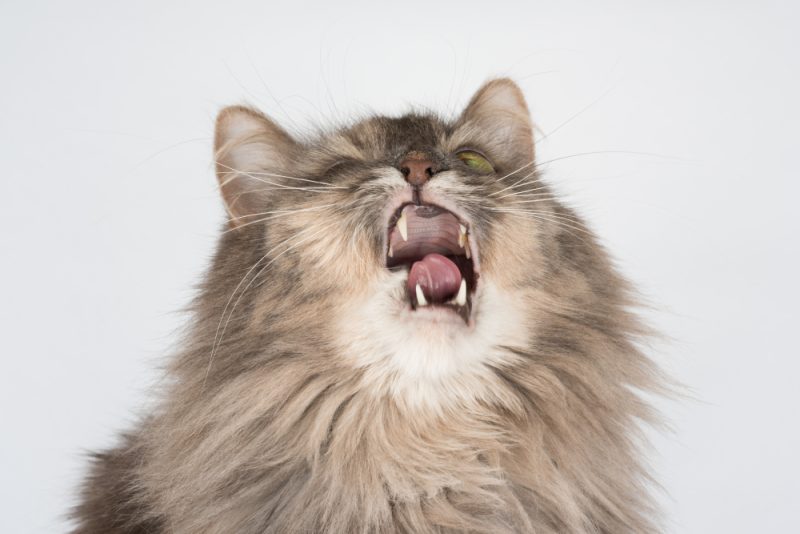In this article
View 2 More +A common phrase associated with cats is, “If I fits, I sits.” They can contort into some of the craziest positions, and you might have seen your cat fit into bins, boxes, and everything in between. They run, jump, sometimes open doors, and climb. How do cats do it all? Can they be double-jointed?
The short answer is no; cats aren’t double-jointed. But our feline friends have fascinating features that increase their mobility and ability to contort their bodies. There are also some conditions in cats that are associated with joint hypermobility.

The 3 Reasons Why Cats Are So Flexible
Cats have increased flexibility compared to people and even other animals. This characteristic is due to several of their muscle and bone configurations.
1. The Vertebrae
Cats have way more vertebrae than you or me. With rare exceptions, humans have 33 vertebrae. Cats have 53 vertebrae 1. These tiny bones are connected with flexible connective tissues and have relatively elastic discs between each vertebra.
2. The Shoulders
Your cat’s shoulders are attached to their body just with muscle, rather than humans’ bony attachments (as well as dogs and many other animals). This interesting anatomical feature allows your cat to have increased flexibility and even allows them to lengthen their body.

3. The Collarbone
Cats have a relatively small collarbone, which means they don’t have a cumbersome bone blocking them from contorting the equivalent of their upper body. It also isn’t attached to other bones: it’s free-floating and anchored in the muscle. It allows them to flatten down or squeeze through narrow passageways.

Conditions That Cause Hypermobility in Cats
Although their anatomy gives cats incredible flexibility, there are some medical conditions that can cause hypermobility in cats: Ehlers-Danlos and joint laxity.
Ehlers-Danlos
Ehlers-Danlos is a condition that affects the connective tissues within the body and can affect people, as well as our canine and feline family members. Affected cats tend to have stretchy and even saggy skin, which can tear easily. If a cat with this inherited disorder gets a laceration, the wound can become quite large, and repairs are often complex.
Treating this condition is aimed at managing the signs. Affected cats should remain indoors to minimize the risk of trauma. If they get a laceration or wound, immediate attention is recommended, with mattress sutures as the wound closure of choice.
Joint Laxity
Some cats develop joint laxity, with carpal laxity being one example. Instead of a nice straight line at the campus or wrist, affected cats have hyperextension or hyperflexion. There are different theories about what causes joint laxity. Some veterinarians believe nutrition is a primary culprit, so if your cat shows signs, your veterinarian will likely review their diet with you. For instance, your vet might look at possible calcium imbalances.
Muscle weakness may lead to joint laxity. Cats that don’t get enough exercise are especially at risk. If they spend time on unstable surfaces, such as slippery floors, your cat might also develop the condition.
If your cat has joint laxity, ensure they eat a well-balanced diet for their life stage. Commercial foods are generally recommended, but a nutritionist can formulate a diet plan for your cat if that is your wish.
Your veterinarian may attempt to stabilize the affected leg or legs with a brace, which is usually temporary. They can work with you to develop an exercise plan to strengthen your cat’s muscles.
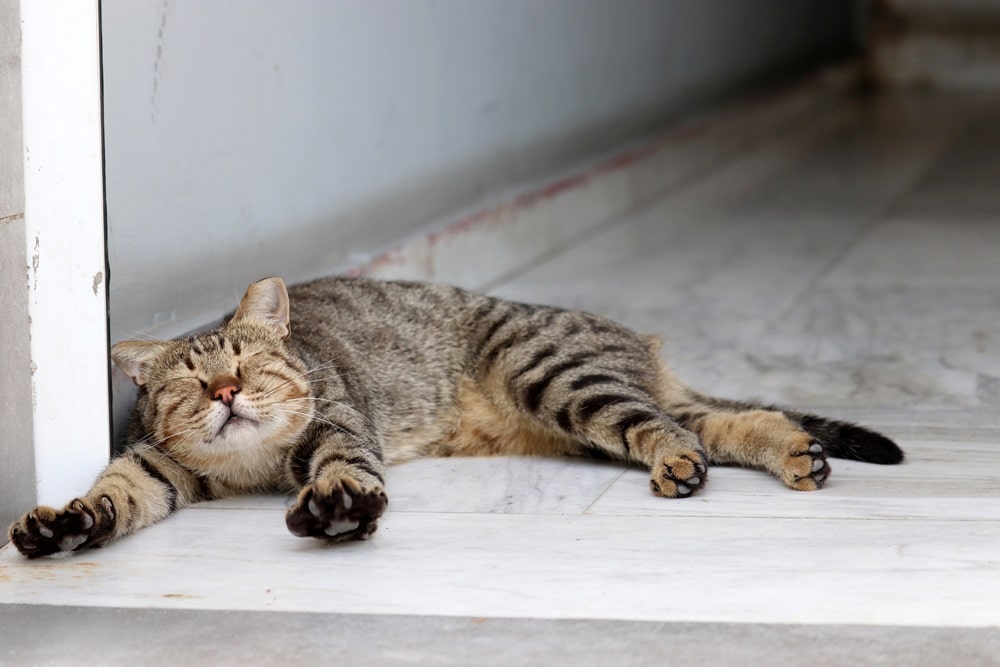

Frequently Asked Questions
What Does Carpal Laxity Look Like in Cats?
Cats can have carpal hyperextension or carpal hyperflexion. With hyperextension, the carpus, which we think of as the wrist, bows downwards towards the ground. With hyperflexion, your cat’s carpus bows upward.
Is Joint Laxity Treatable in Cats?
In many cases, joint laxity can be treatable in your kitty, especially if they’re young. Your veterinarian can help develop a treatment plan to strengthen your cat’s muscles and stabilize the leg to minimize the chance of worsening the condition. Proper nutrition and exercise can be very beneficial.

Conclusion
While cats aren’t double-jointed, they’re still amazingly flexible and can manipulate their way into various positions. Their bodies are designed to allow maximum flexibility so they can pounce on prey or balance on the back of your couch.
Featured Image Credit: kevin burt, Pixabay

